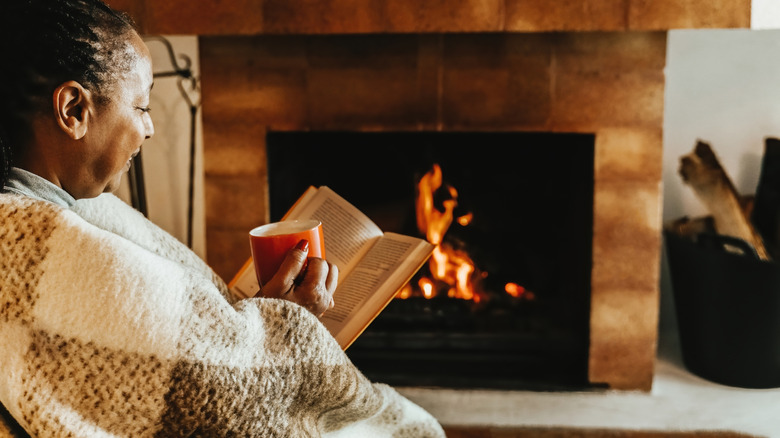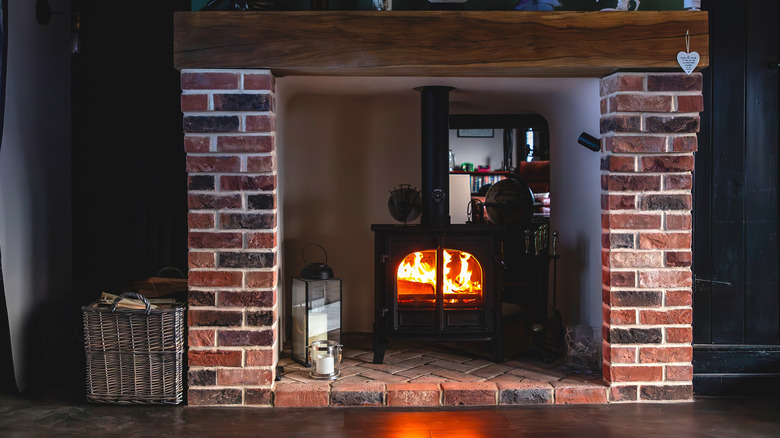The Alternative To A Wood-Burning Fireplace That Gives Off So Much More Heat
We all love the idea of a fire. It crackles, glows, and brings people together. But we rarely stop to consider how helpful it actually is. A roaring hearth promises warmth, but much of its heat actually escapes, vanishing into the unseen channels above us. You might stack logs and tend the fire, hoping to create a cozy atmosphere, but all you'll often get is fleeting warmth for a lot of effort. In chasing tradition, we overlook the fact that the measure of heat is not in the ritual, but in how efficiently it reaches the space we inhabit. If you want a fireplace that provides some actual warmth instead of just ambiance, there's a simple solution you might not have tried yet, and that's putting a wood-burning stove in your fireplace.
Penn State Extension shares that a traditional fireplace converts barely 20% of its fuel into usable heat. The rest vanishes straight up the chimney like smoke signals to the neighbors. Wood-burning stoves, on the other hand, can reach around 80% efficiency, which means every log you toss in is working hard to keep your toes toasty. Airflow, combustion, and insulation all team up so that the stove radiates heat evenly throughout the room. You'll feel it in your bones, in the corners, and near the drafty window you've sworn was a portal to the Arctic. And because stoves burn fuel more consistently and completely, they produce far less smoke and fewer pollutants than a standard fireplace. In addition to the other benefits of wood-burning stoves, this means your indoor air stays cleaner and your conscience lighter.
Things to consider before installing a stove in fireplace
Before you install a stove to make your home feel more warm and cozy, you'll need to figure out whether your fireplace can even host one. The first thing to check is your chimney type. If you've got a Class 1 chimney, you're generally in the clear. These are often made of stone or brick and have at least a 7-inch chimney diameter. They're built for solid-fuel appliances and can safely handle the smoke a wood stove produces. That's not the case with a Class 2 chimney, though. These are typically made of stainless steel with a smaller diameter. They're only suitable for gas appliances and simply can't cope with the temperatures and smoke produced by a wood-burning stove.
The flue is the next big piece of the puzzle. If it's too wide, the smoke won't rise efficiently, but a narrow flue won't allow the stove to pull enough air to burn cleanly. Most stoves in fireplaces require a proper flue liner with a diameter that fits the stove pipe. Your chimney will need to be wide enough to accommodate the flue liner as it stretches up to the top.
You'll also need to consider the gap between your stove and the walls around it. Stoves are compact, but they run really hot. If a stove sits too close to a wall, you risk giving your drywall a suntan — or in a worst-case scenario, igniting it. Even in a lined fireplace hearth, the stove will still need enough space for good airflow. If you've found a stove that checks all the boxes, have it installed by an expert. They know the rules and will make sure the inside of the stove is the only thing burning in your home.

